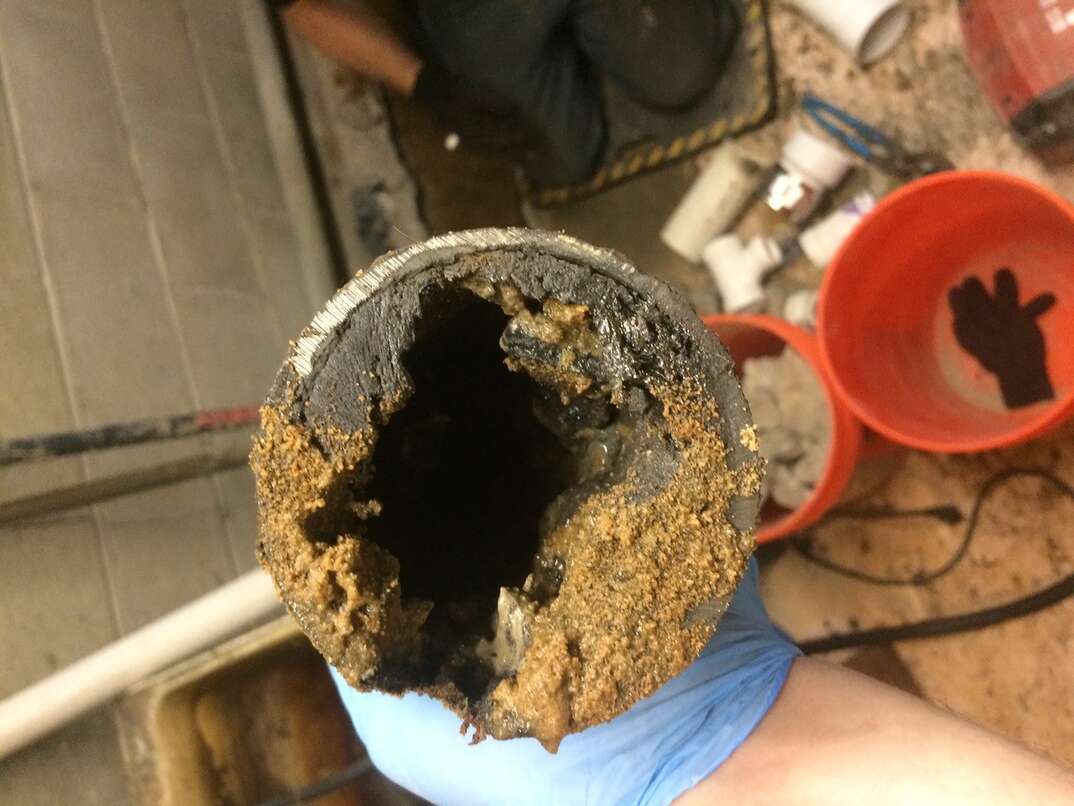Why Is My Toilet Overflowing?

Watching the toilet's water level quickly rise can cause sheer panic in even the calmest of homeowners. Suddenly, your mind floods with questions as fast as your bathroom floods with water.
Your toilet could be overflowing for any of a number of reasons. We’ll help you get to the bottom of it.
What Causes a Toilet to Randomly Overflow?
Your toilet overflowing might seem like a random phenomenon, but there's likely a deeper cause at play. Clogs are the most common cause of your toilet overflowing. The clog could be in the toilet, or it could be down the line where you can't see it. Clogs often happen if you put too much toilet paper in the toilet or flush anything other than waste and toilet paper.
The water flow could also be to blame. Low-flow models might not have enough pressure to push waste down through the pipes. There can also be issues with the tank float or flapper. If the flapper doesn't close all the way, it can let water continue to flow into the bowl. An issue with the float ball could also cause water to keep running. The float ball tells the toilet when to stop filling the tank.
How Do You Stop a Toilet From Overflowing?
If you see the water level rising, reach for the toilet shut-off valve quickly. It usually sticks out of the wall behind the toilet and has a knob on it. Turn the knob counterclockwise to stop more water from running into the toilet.
If you can't get to the shut-off valve or it doesn't work, take the lid off the tank. Press down the flapper, if it's still up, to stop the flow of water. You can also raise the float ball as high as possible so the toilet stops running water into the tank.
How Do You Unclog a Toilet That Is Full of Water?
Once you shut the water off, you need to unclog the toilet before you turn it back on. A toilet plunger with a flange is usually an effective way to do this. If the toilet is completely full, you might want to scoop out some of the water with a bucket first. This keeps it from sloshing onto the floor as you plunge.
Position the plunger over the opening at the bottom of the toilet bowl. You need a tight seal around the hole for it to be effective. Plunge up and down for about 10 to 20 seconds. Repeat this process if necessary.
If the plunger doesn't work or you don't have one handy, you can try other methods. One option is to squeeze some dish soap into the toilet and pour in about a gallon of hot but not boiling water. Let it sit for 20 to 30 minutes to see if that helps break up the clog.
You can also use the reaction between vinegar and baking soda to work out the clog. Scoop out half or more of the water. Then add baking soda and vinegar to the bowl and let it bubble for about 20 minutes.
More Related Articles:
- Calling a Plumber? Here Are the 6 Most Common Plumbing Jobs and How Much They Cost
- 6 Ways to Try to Unclog Your Sink Before You Call a Plumber
- What's in My Plumber's Van?
- Here's How Much It Costs to Remodel a Bathroom
- 6 Tips for Hiring a Plumber
Why Is My Toilet Overflowing But Not Clogged?
Your toilet could still be clogged even if it doesn't look like it is. When you plunge your toilet, it can push the clog deeper into the pipes without pushing it all the way through. This could cause continued overflowing. The clog could also be somewhere else in your plumbing lines, including your sewer. You'll likely need a plumber to handle deeper clogs, especially if the issue is in your sewer line.
However, there are some causes of toilet overflowing that aren't clog-related. If the plumbing vent is blocked or isn't working correctly, it can't bring in air like it's supposed to, which could cause overflowing or other issues. A plumber can unclog the vent and get things flowing correctly again.
You could also have an issue if the float in your toilet is higher than it should be. This will cause the tank to fill with too much water. When you flush, the extra water goes into the bowl and could cause it to overflow. Lowering the float can solve the problem if this is the cause.
If you're constantly dealing with an overflowing toilet or clogs, calling a plumber might be necessary. Plumbers have professional-grade tools that can help clear clogs anywhere in your plumbing system. Their solutions usually last longer than DIY options.


